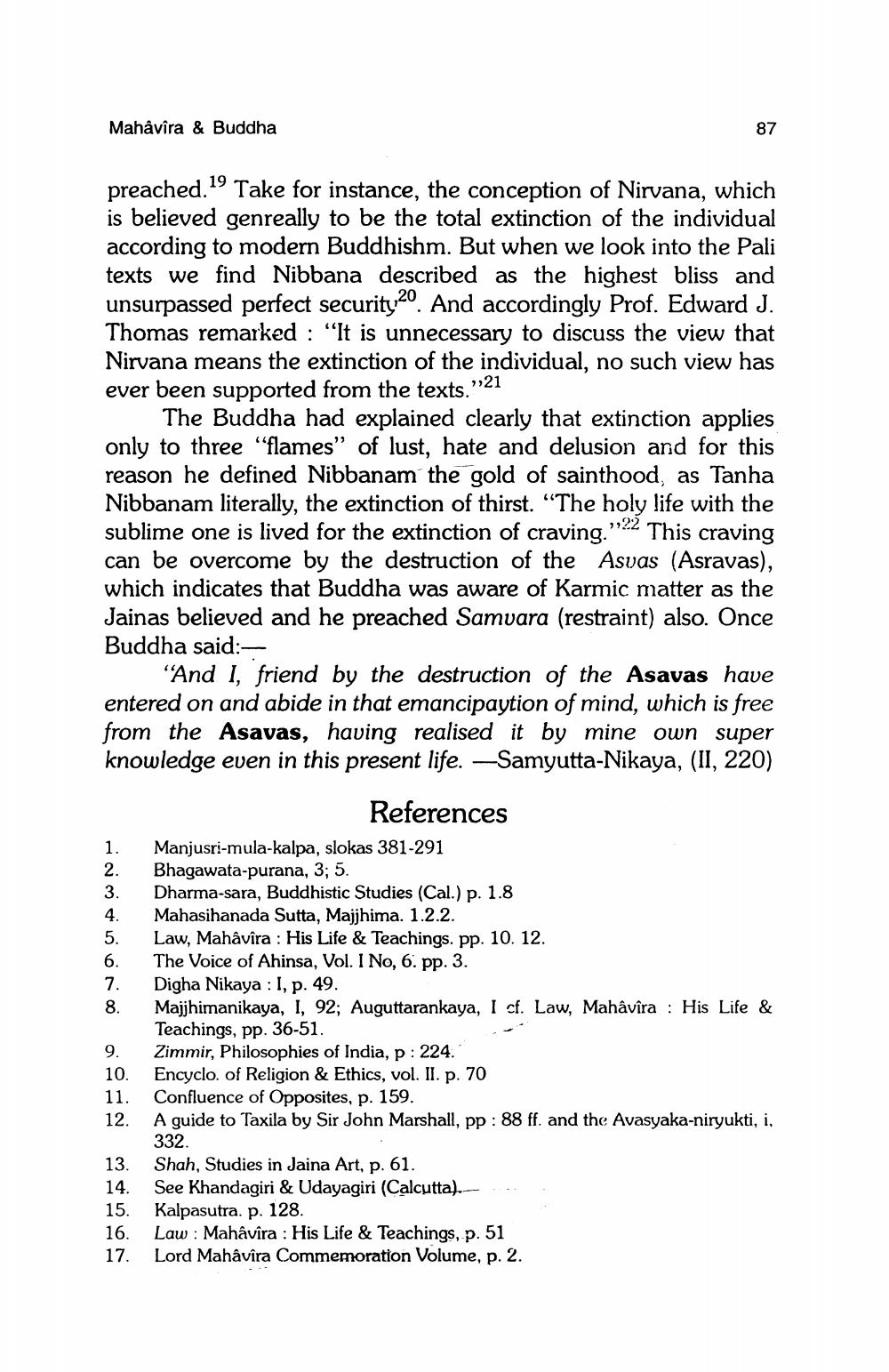________________
Mahâvîra & Buddha
87
preached. 19 Take for instance, the conception of Nirvana, which is believed genreally to be the total extinction of the individual according to modern Buddhishm. But when we look into the Pali texts we find Nibbana described as the highest bliss and unsurpassed perfect security2o. And accordingly Prof. Edward J. Thomas remarked : "It is unnecessary to discuss the view that Nirvana means the extinction of the individual, no such view has ever been supported from the texts."21
The Buddha had explained clearly that extinction applies only to three "flames” of lust, hate and delusion and for this reason he defined Nibbanam the gold of sainthood, as Tanha Nibbanam literally, the extinction of thirst. “The holy life with the sublime one is lived for the extinction of craving."22 This craving can be overcome by the destruction of the Asvas (Asravas). which indicates that Buddha was aware of Karmic matter as the Jainas believed and he preached Samvara (restraint) also. Once Buddha said:
“And I, friend by the destruction of the Asavas have entered on and abide in that emancipaytion of mind, which is free from the Asavas, having realised it by mine own super knowledge even in this present life. -Samyutta-Nikaya, (II, 220)
Rain Wonoso
References Manjusri-mula-kalpa, slokas 381-291 Bhagawata-purana, 3; 5. Dharma-sara, Buddhistic Studies (Cal.) p. 1.8 Mahasihanada Sutta, Majjhima. 1.2.2. Law, Mahâvîra : His Life & Teachings. pp. 10. 12. The Voice of Ahinsa, Vol. I No, 6. pp. 3. Digha Nikaya : I, p. 49. Majjhimanikaya, I, 92; Auguttarankaya, I cf. Law, Mahâvîra : His Life & Teachings, pp. 36-51.
Zimmir, Philosophies of India, p : 224. 10. Encyclo. of Religion & Ethics, vol. II. p. 70
Confluence of Opposites, p. 159. A guide to Taxila by Sir John Marshall, pp : 88 ff. and the Avasyaka-niryukti, i,
332. 13. Shah, Studies in Jaina Art, p. 61. 14. See Khandagiri & Udayagiri (Calcutta). 15. Kalpasutra. p. 128. 16. Law : Mahâvîra : His Life & Teachings, p. 51 17. Lord Mahâvîra Commemoration Volume, p. 2.




